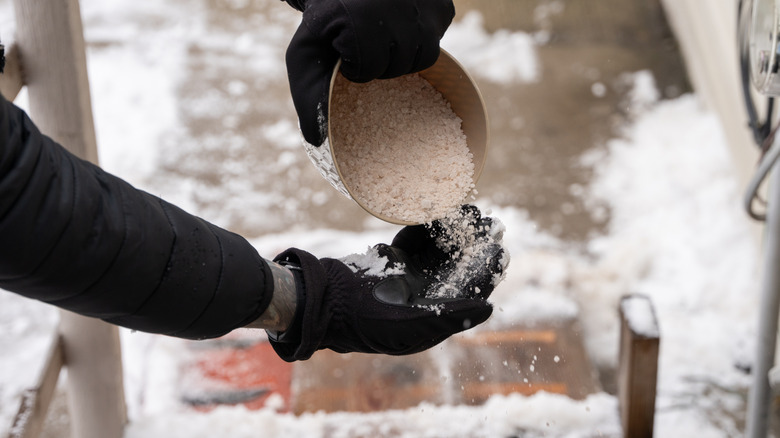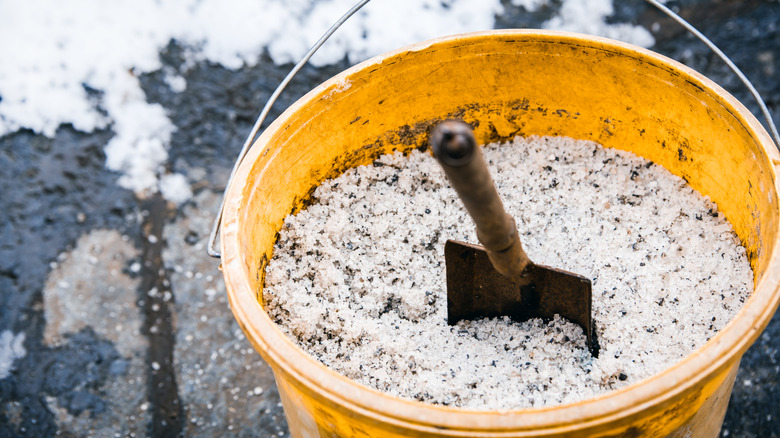The Downsides Of Using Too Much Deicing Salt In The Winter
During winter, keeping your sidewalks, driveways, and other surfaces from getting too icy is a never-ending battle. Not only is slipping on ice annoying, but it can result in injuries like sprains, broken wrists, and more. You may be tempted to go nuclear and overload your surfaces with deicing salt. The most common product on the market to melt or prevent ice is rock salt, a type of sodium chloride that's extremely popular because it's both affordable and widely available. The sodium lowers the freezing point of water, making it harder for water molecules to bond together, which is what results in ice. However, overusing deicing salt in the winter could wreak havoc on your surrounding environment.
While using salt may make winter treks easier, the sodium overload causes significant plant damage like stunted growth, loss of foliage or branches, and even premature death. Even if your plants are dormant, the chemical will leech into the surrounding soil where it is easily absorbed by their roots, leading to dehydration. This impact extends to your lawn, too, so if you've ever noticed a bunch of dead strips after winter, that may be the reason. Although there are foolproof tricks you can follow to protect your plants from deicing salt, its downsides don't end there.
Deicing salt hurts more than just your plants
In addition to plant damage, deicing salt contributes to groundwater pollution. Remember, all that product has to run off somewhere, and all it takes is a single teaspoon of it to permanently pollute 5 gallons of water. The chloride present in deicing salt also poses a risk to water life like fish, aquatic bugs, and amphibians because it impacts oxygen levels. If that wasn't bad enough, it can increase lake water density, which has a negative impact on lake mixing. Furthermore, there are currently no ways to remove these salts once they get into water supplies.
Deicing salt is harsh on materials like concrete, too. Most often, it'll result in flaking and chipping. However, other signs of salt-damaged concrete include discoloration, surface erosion, and cracks. If you have metal around, the sodium could also cause it to corrode. Additionally, deicing salts are toxic to pets and may cause salt toxicosis. Although symptoms vary depending on species, they include weakness, muscle tremors, and seizure-like activity. It only takes 1 ½ grams per pound of a dog's body weight to be lethal.
Thankfully, there are other affordable and accessible ways to remove ice from your walkways this winter. For example, Epsom salt is one deicer alternative that won't harm your lawn. However, it is going to be much slower than commercial products. To speed up results, try mixing sugar and Epsom salt in a 1-to-1 ratio. Lastly, it may come as a surprise, but you can also use vinegar as a rock salt alternative.

